Assessment of Different Channel Equalization Algorithms for a Converged OFDM-Based 5G mm-wave A-RoF System at 60 GHz †
Abstract
1. Introduction
2. Converged 5G mm-wave A-RoF OFDM Digital Communication System
3. Different Equalization Algorithms
3.1. Least Mean Square Algorithm
3.2. Constant Modulus Algorithm
3.3. Adaptive Median Filtering Algorithm
4. Simulation Setup
5. Error Vector Magnitude Calculation
6. Results
6.1. Equalization by the Least Mean Square Algorithm
6.2. Equalization by the CMA Algorithm
6.3. Equalization by Median Filtering
7. Conclusions
Author Contributions
Funding
Institutional Review Board Statement
Informed Consent Statement
Data Availability Statement
Conflicts of Interest
References
- G.989.1: 40-Gigabit-Capable Passive Optical Networks (NG-PON2): General Requirements. Available online: https://www.itu.int/rec/T-REC-G.989.1/e (accessed on 15 December 2021).
- Nesset, D. NG-PON2 Technology and Standards. J. Lightwave Technol. 2015, 33, 1136–1143. [Google Scholar] [CrossRef]
- Okumura, Y.; Terada, J. Optical Network Technologies and Architectures for Backhaul/Fronthaul of Future Radio Access Supporting Big Mobile Data. In Proceedings of the Optical Fiber Communication Conference, San Francisco, CA, USA, 9–13 March 2014. [Google Scholar]
- Ishimura, S.; Bekkali, A.; Tanaka, K.; Nishimura, K.; Suzuki, M. 1.032-Tb/s CPRI-Equivalent Rate IF-Over-Fiber Transmission Using a Parallel IM/PM Transmitter for High-Capacity Mobile Fronthaul Links. J. Lightwave Technol. 2018, 36, 1478–1484. [Google Scholar] [CrossRef]
- Yu, H.; Doylend, J.; Lin, W.; Nguyen, K.; Liu, W.; Gold, D.; Dahal, A.; Jan, C.; Herrick, R.; Ghiurcan, G.A.; et al. 100Gbps CWDM4 Silicon Photonics Transmitter for 5G Applications. In Proceedings of the Optical Fiber Communication Conference, San Diego, CA, USA, 3–7 March 2019. [Google Scholar]
- Lim, C.; Tian, Y.; Ranaweera, C.; Nirmalathas, T.; Wong, E.; Lee, K. Evolution of Radio-Over-Fiber Technology. J. Lightwave Technol. 2019, 37, 1647–1656. [Google Scholar] [CrossRef]
- Dat, P.T.; Kanno, A.; Inagaki, K.; Kawanishi, T. High-Capacity Wireless Backhaul Network Using Seamless Convergence of Radio-over-Fiber and 90-GHz Millimeter-Wave. J. Lightwave Technol. 2014, 32, 3910–3923. [Google Scholar] [CrossRef]
- Cui, Y.; Xu, K.; Dai, J.; Sun, X.; Dai, Y.; Ji, Y.; Lin, J. Overcoming Chromatic-Dispersion-Induced Power Fading in ROF Links Employing Parallel Modulators. IEEE Photonics Technol. Lett. 2012, 24, 1173–1175. [Google Scholar] [CrossRef]
- Rzaiqui, H.; Poette, J.; Cabon, B.; Brendel, F.; Khayatzadeh, R. Optical Heterodyning for Reduction of Chromatic Dispersion Sensitivity in 60 Ghz Mode-Locked Lasers Systems. IEEE J. Lightwave Technol. 2017, 29, 2059–2062. [Google Scholar] [CrossRef]
- Salman, A.; Zafrullah, M. 40 Gb/S 4-QAM OFDM Radio over Fiber System at 60 Ghz Employing Coherent Detection. J. Mod. Opt. 2015, 62, 296–301. [Google Scholar] [CrossRef]
- Li, X.; Xiao, X.; Xu, Y.; Wang, K.; Zhao, L.; Xiao, J.; Yu, J. Real-Time Demonstration of over 20Gbps V-and W-Band Wireless Transmission Capacity in One OFDM-Rof System. In Proceedings of the Optical Fiber Communication Conference, Los Angeles, CA, USA, 19–23 March 2017; pp. 1–3. [Google Scholar]
- Ilgaz, M.A.; Batagelj, B. Application of an Opto-Electronic Oscillator In 5G Mobile and Wireless Networks with a Low Frequency Drift, a High Side-Modes-Suppression Ratio and without a Power Penalty Due to Chromatic Dispersion. In Proceedings of the 2018 European Conference on Networks and Communications (EuCNC), Valencia, Spain, 18–21 June 2018. [Google Scholar] [CrossRef]
- James, J.; Shen, P.; Nkansah, A.; Liang, X.; Gomes, N.J. Nonlinearity and Noise Effects in Multi-Level Signal Millimeter-Wave Over Fiber Transmission Using Single and Dual Wavelength Modulation. IEEE Trans. Microw. Theory Tech. 2010, 58, 3189–3198. [Google Scholar] [CrossRef][Green Version]
- Chen, Z.; Yan, L.; Pan, W.; Luo, B.; Zou, X.; Guo, Y.; Jiang, H.; Zhou, T. SFDR Enhancement in Analog Photonic Links by Simultaneous Compensation for Dispersion and Nonlinearity. Opt. Express 2013, 21, 20999–21009. [Google Scholar] [CrossRef]
- Zhang, X.; Zhu, R.; Shen, D.; Liu, T. Linearization Technologies for Broadband Radio-Over-Fiber Transmission Systems. Photonics 2014, 1, 455–472. [Google Scholar] [CrossRef]
- Liu, S.; Shen, G.; Kou, Y.; Tian, H. Special Cascade LMS Equalization Scheme Suitable for 60-Ghz Rof Transmission System. Opt. Express 2016, 24, 10599–10610. [Google Scholar] [CrossRef] [PubMed]
- Nanni, J.; Polleux, J.-L.; Algani, C.; Rusticelli, S.; Perini, F.; Tartarini, G. VCSEL-Based Radio-Over-G652 Fiber System for Short-/Medium-Range MFH Solutions. J. Lightwave Technol. 2018, 36, 4430–4437. [Google Scholar] [CrossRef]
- Hadi, M.U.; Jung, H.; Ghaffar, S.; Traverso, P.A.; Tartarini, C. Optimized Digital Radio over Fiber System for Medium Range Communication. Opt. Commun. 2019, 443, 177–185. [Google Scholar] [CrossRef]
- Liu, S.; Shen, G.; Tian, H. A 60-Ghz Rof System Employing Variable Step Size LMS Equalizer with Fast Convergence Speed. In Proceedings of the Optical Fiber Communication Conference, Anaheim, CA, USA, 20–22 March 2016. [Google Scholar]
- Hadi, M.U.; Traverso, P.A.; Tartarini, G.; Venard, O.; Baudoin, G.; Polleux, J.-L. Digital Predistortion for Linearity Improvement of VCSEL-SSMF-Based Radio-Over-Fiber Links. IEEE Microw. Wirel. Compon. Lett. 2019, 29, 155–157. [Google Scholar] [CrossRef]
- Hadi, M.U.; Awais, M.; Raza, M.; Khurshid, K.; Jung, H. Neural Network DPD for Aggrandizing SM-VCSEL-SSMF-Based Radio over Fiber Link Performance. Photonics 2021, 8, 19. [Google Scholar] [CrossRef]
- Asharif, F.; Tamaki, S.; Alsharif, M.R.; Ryu, H.G. Performance Improvement of Constant Modulus Algorithm Blind Equalizer for 16 QAM Modulation. Int. J. Innov. Comput. Inf. Control. 2013, 7, 1377–1384. [Google Scholar]
- Zhang, J.; Zeng, X. Blind Equalization Algorithm for 16-QAM Signals. In Proceedings of the 2018 8th International Conference on Manufacturing Science and Engineering (ICMSE 2018), Shenzhen, China, 30–31 March 2018. [Google Scholar] [CrossRef]
- Zhou, J.; Zhang, Y. Blind Time Domain Nonlinear Compensator Embedded in The Constant Modulus Algorithm. Opt. Express 2019, 27, 22794–22807. [Google Scholar] [CrossRef]
- VPIphotonics: Simulation Software and Design Services. Available online: https://www.vpiphotonics.com/ (accessed on 1 December 2021).
- Parker, M. Digital Signal Processing 101, 2nd ed.; Elsevier: Amsterdam, The Netherlands, 2017; ISBN 978-0-12-811453-7. [Google Scholar]
- MATLAB & Simulink–MathWorks. Available online: https://www.mathworks.com/products/matlab.html (accessed on 1 December 2021).
- Elangovan, K. Comparative Study on the Channel Estimation for OFDM System Using LMS, NLMS and RLS Algorithms. In Proceedings of the International Conference on Pattern Recognition, Informatics and Medical Engineering (PRIME-2012), Salem, India, 21–23 March 2012; pp. 359–363. [Google Scholar] [CrossRef]
- Moshirian, S.; Ghadami, S.; Havaei, M. Blind Channel Equalization. arXiv 2012, arXiv:1208.2205. [Google Scholar]
- Armstrong, J. OFDM for Optical Communications. J. Lightwave Technol. 2009, 27, 189–204. [Google Scholar] [CrossRef]
- Smalley, D. Equalization Concepts: A Tutorial; Atlanta Regional Technology Center, Texas Instruments: Dallas, TX, USA, 1944; pp. 1–29. [Google Scholar]
- Rai, A.; Kohli, A.K. Convergence Analysis of LMS Based Adaptive Filter. AIP Conf. Proc. 2010, 1324, 349–351. [Google Scholar]
- Haykin, S. Adaptive Filter Theory, 4th ed.; Prentice-Hall: Hoboken, NJ, USA, 2002. [Google Scholar]
- Godard, D. Self-Recovering Equalization and Carrier Tracking in Two-Dimensional Data Communication Systems. IEEE Trans. Commun. 1980, 28, 1867–1875. [Google Scholar] [CrossRef]
- Treichler, J.; Agee, B. A New Approach to Multipath Correction of Constant Modulus Signals. IEEE Trans. Acoust. Speech Signal Processing 1983, 31, 459–472. [Google Scholar] [CrossRef]
- Fernandes, C.A.R.; Mota, J.C.M.; Favier, G. Decision Directed Algorithms for Blind Equalization Based on Constant Modulus Criteria. In Proceedings of the 20° Colloquium on Signal and Image Processing, FRA, Novosibirsk, Russia, 20–24 June 2005. [Google Scholar]
- Johnson, R.; Schniter, P.; Endres, T.J.; Behm, J.D.; Brown, D.R.; Casas, R.A. Blind Equalization Using the Constant Modulus Criterion: A Review. Proc. IEEE 1998, 86, 1927–1950. [Google Scholar] [CrossRef]
- Fatadin, I.; Ives, D.; Savory, S.J. Blind Equalization and Carrier Phase Recovery in a 16-QAM Optical Coherent System. J. Lightwave Technol. 2009, 27, 3042–3049. [Google Scholar] [CrossRef]
- Tukey, J.W. Exploratory Data Analysis; SAGE Publications: London, UK, 1977; Volume 2. [Google Scholar]
- Umbaugh, S.E. Computer Vision and Image Processing; Prentice-Hall: Bergen, NJ, USA, 1998. [Google Scholar]
- Yazdi, H.S.; Homayouni, F. Impulsive Noise Suppression of Images Using Adaptive Median Filter. Int. J. Signal Processing Image Processing Pattern Recognit. 2010, 3, 1–12. [Google Scholar]
- Fatadin, I. Estimation of BER from Error Vector Magnitude for Optical Coherent Systems. Photonics 2016, 3, 21. [Google Scholar] [CrossRef]
- McKinley, M.D.; Remley, K.A.; Myslinski, M.; Kenney, J.S.; Schreurs, D.; Nauwelaers, B. EVM Calculation for Broadband Modulated Signals. In Proceedings of the 64th ARFTG Conference, Orlando, FL, USA, 2–3 December 2004; pp. 45–52. [Google Scholar]
- 3GPP TS 38.104 5G; NR; Base Station (BS) Radio Transmission and Reception, v. 15.2.0 (2018-7). Available online: https://www.etsi.org/deliver/etsi_ts/138100_138199/138104/15.02.00_60/ts_138104v150200p.pdf (accessed on 15 December 2021).
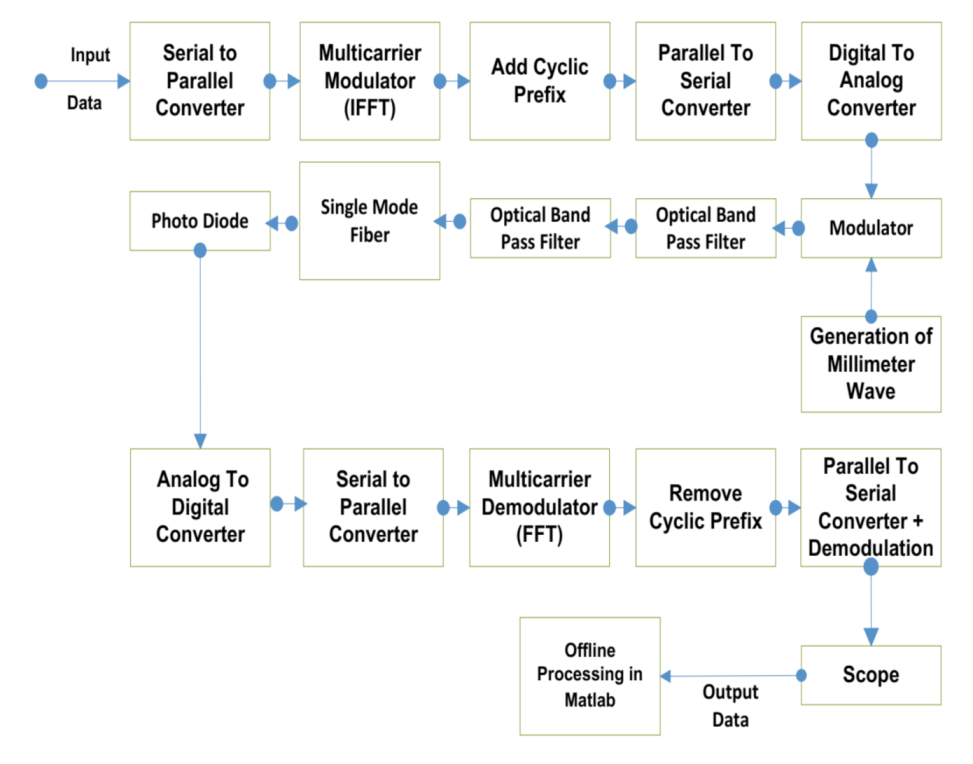
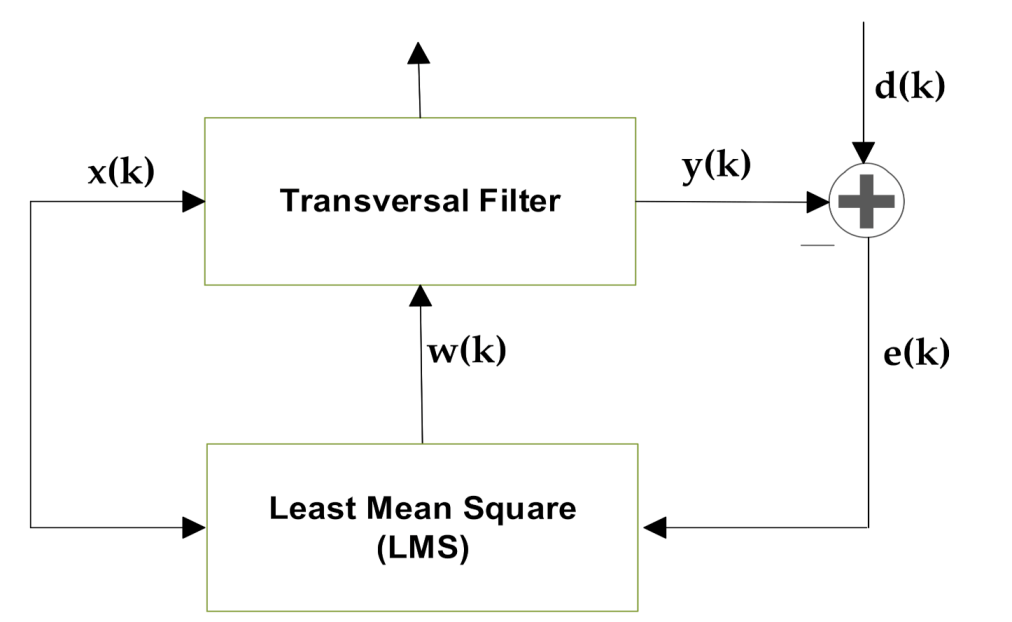
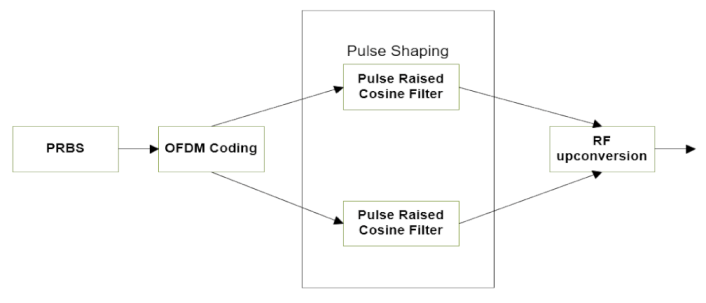

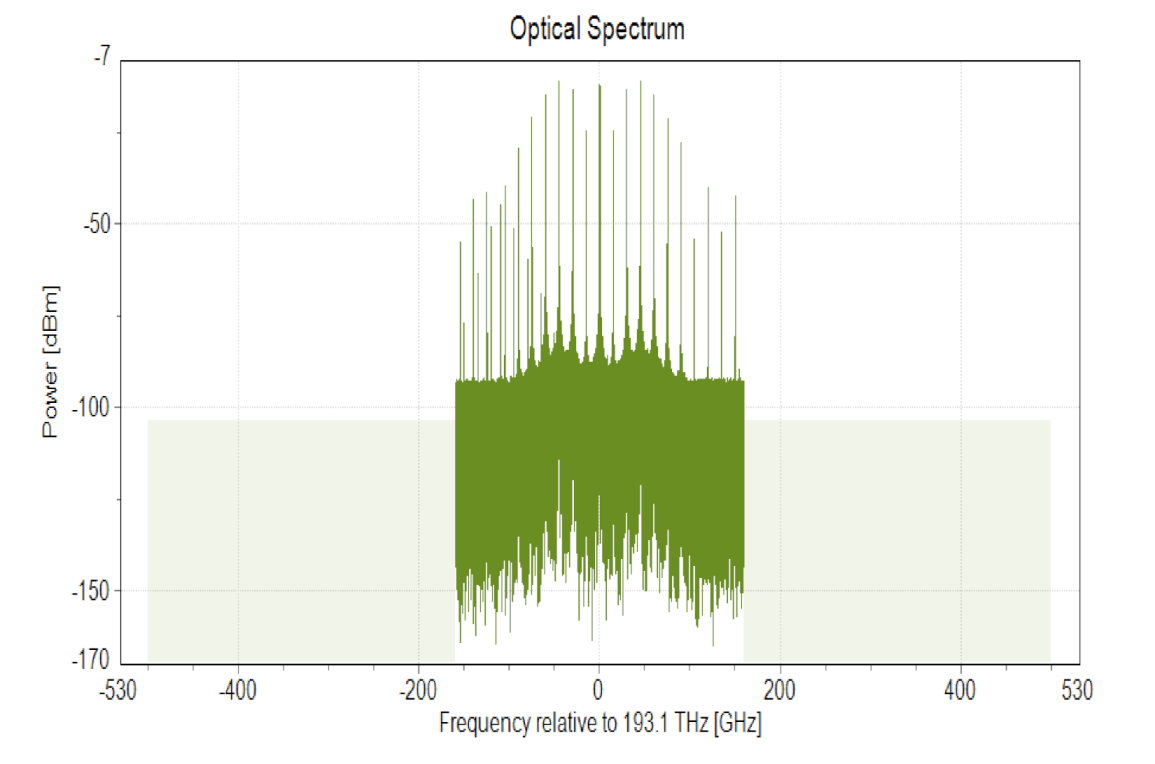

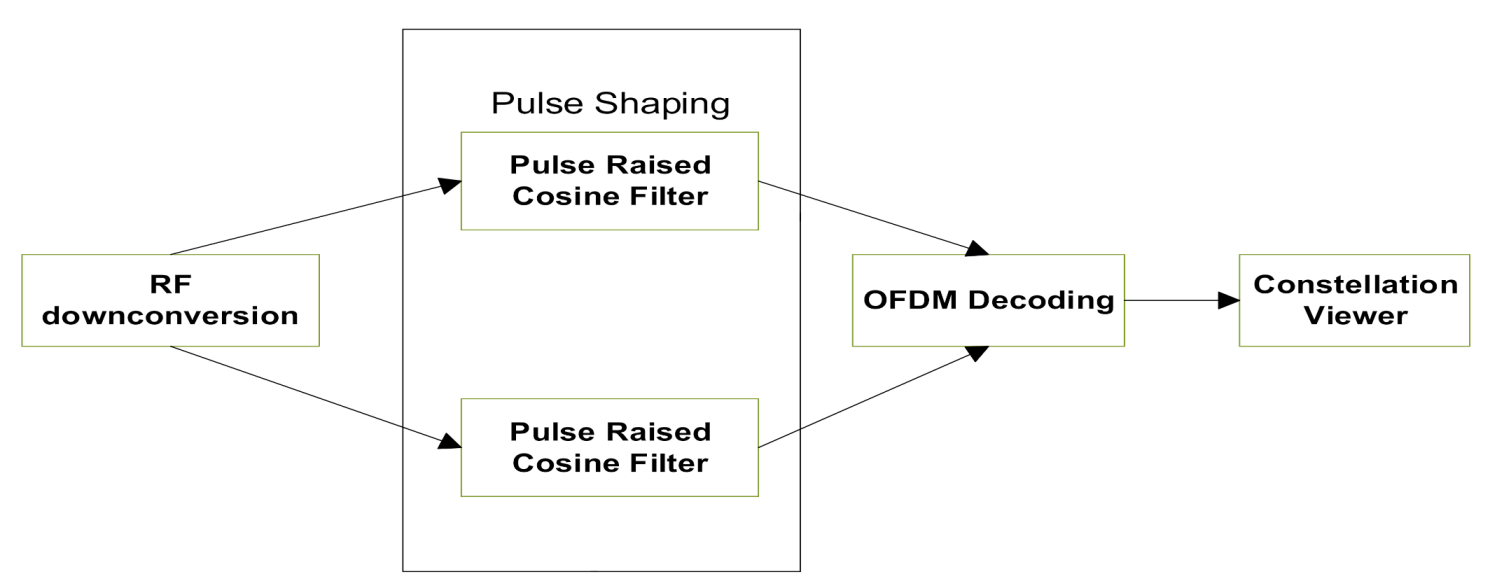
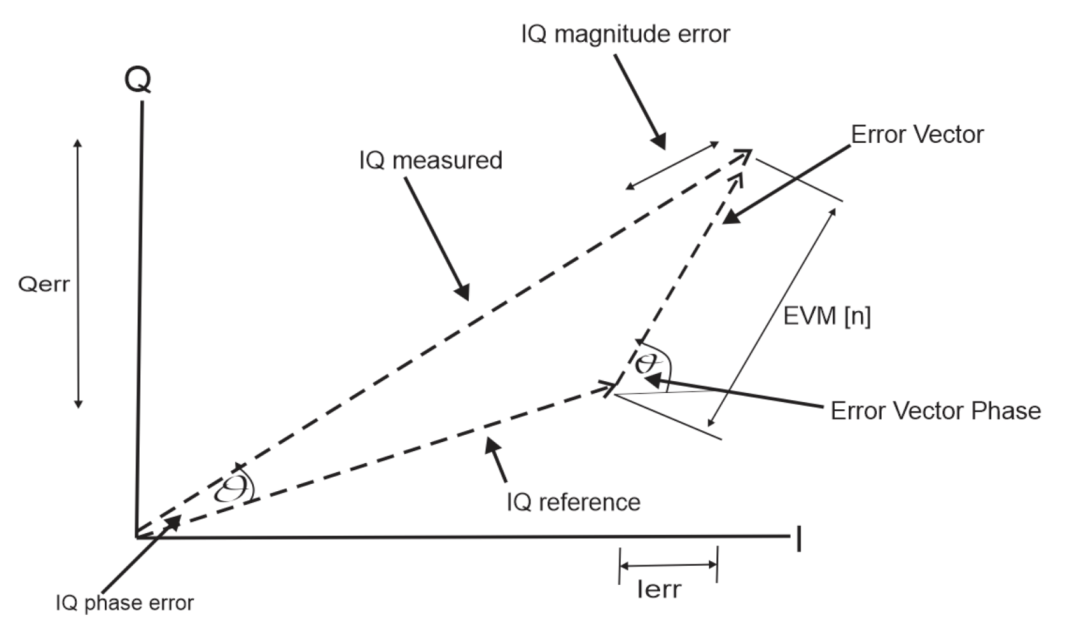


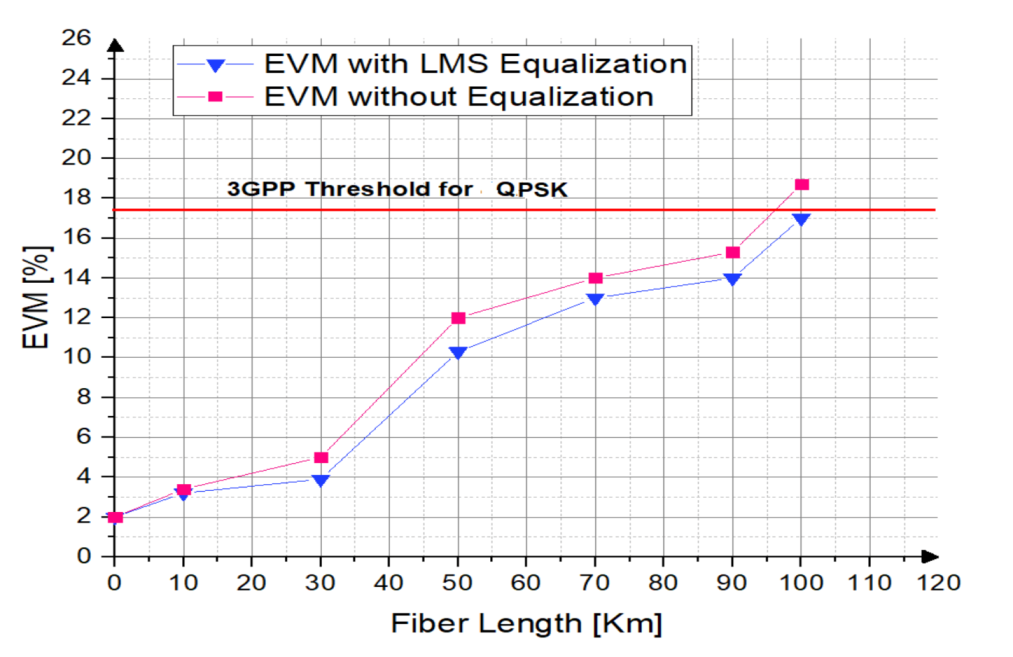
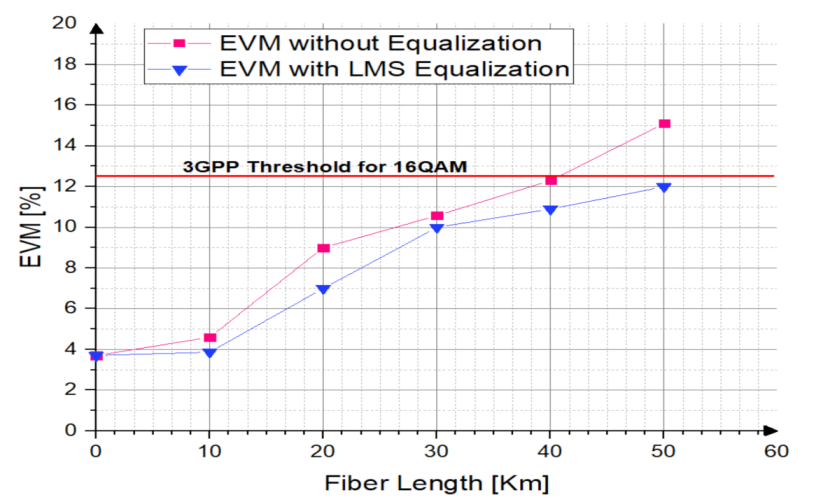
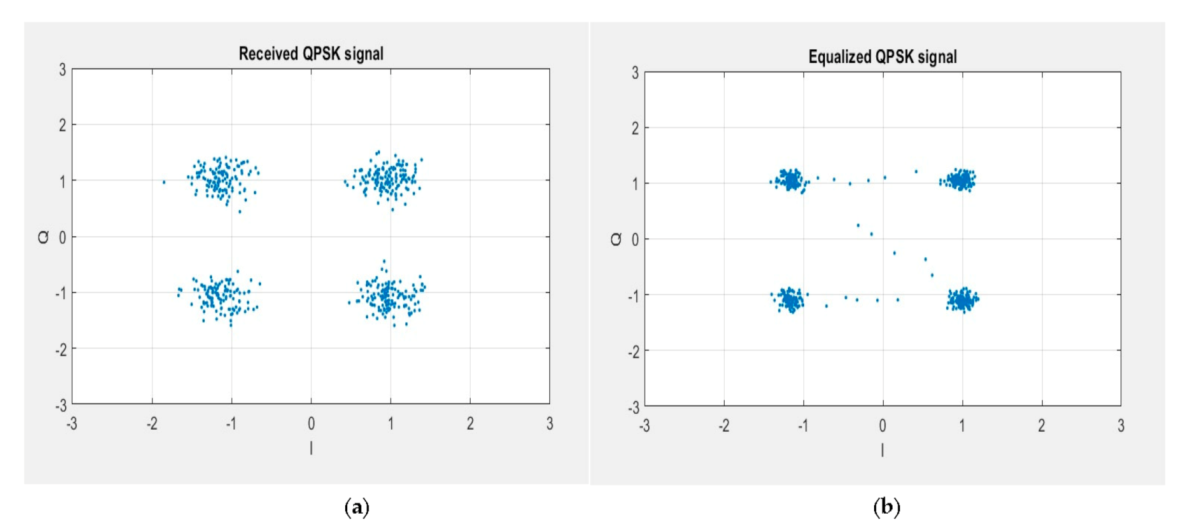

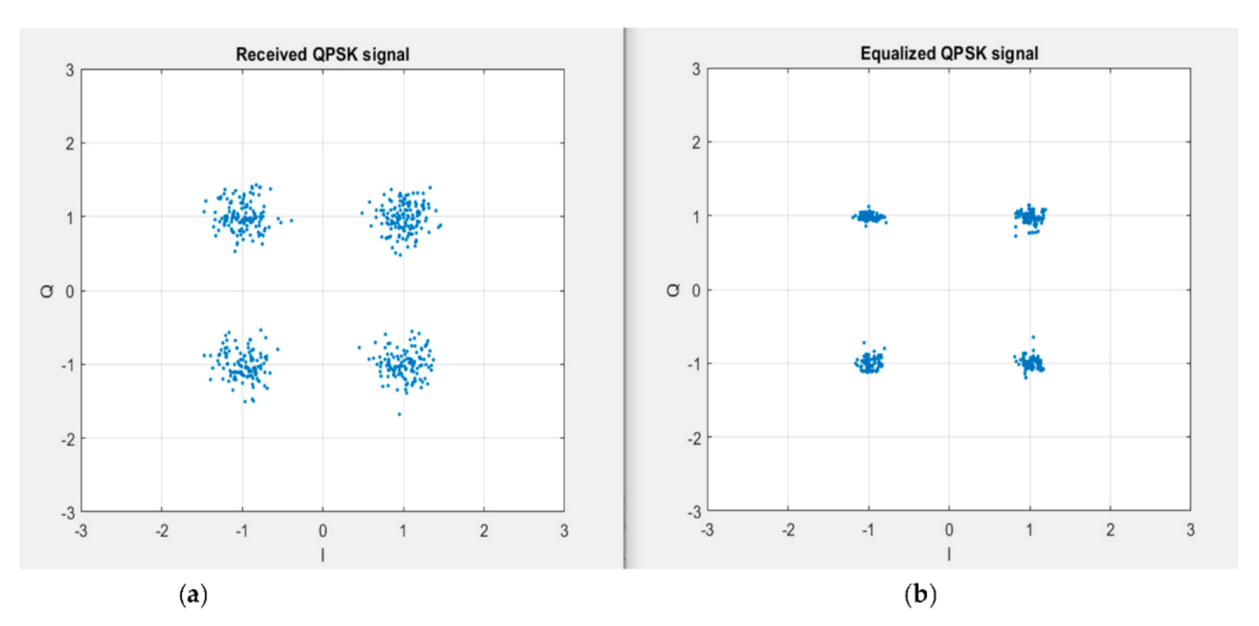
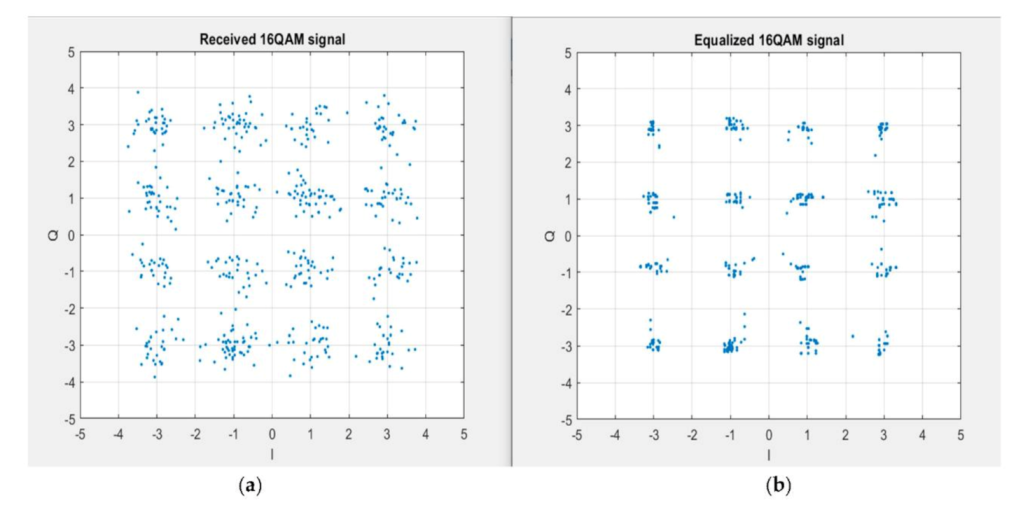
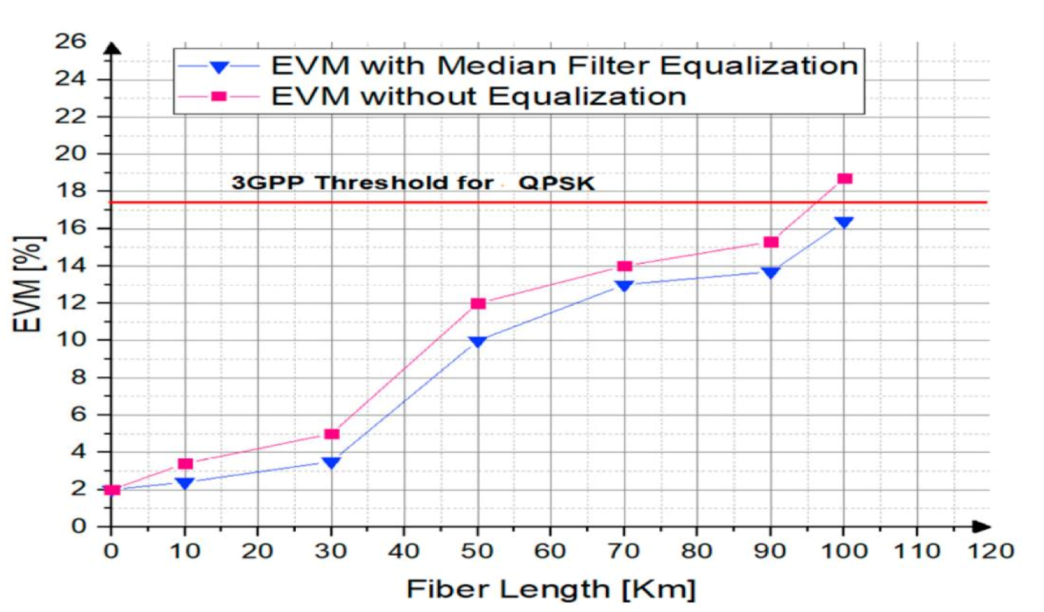

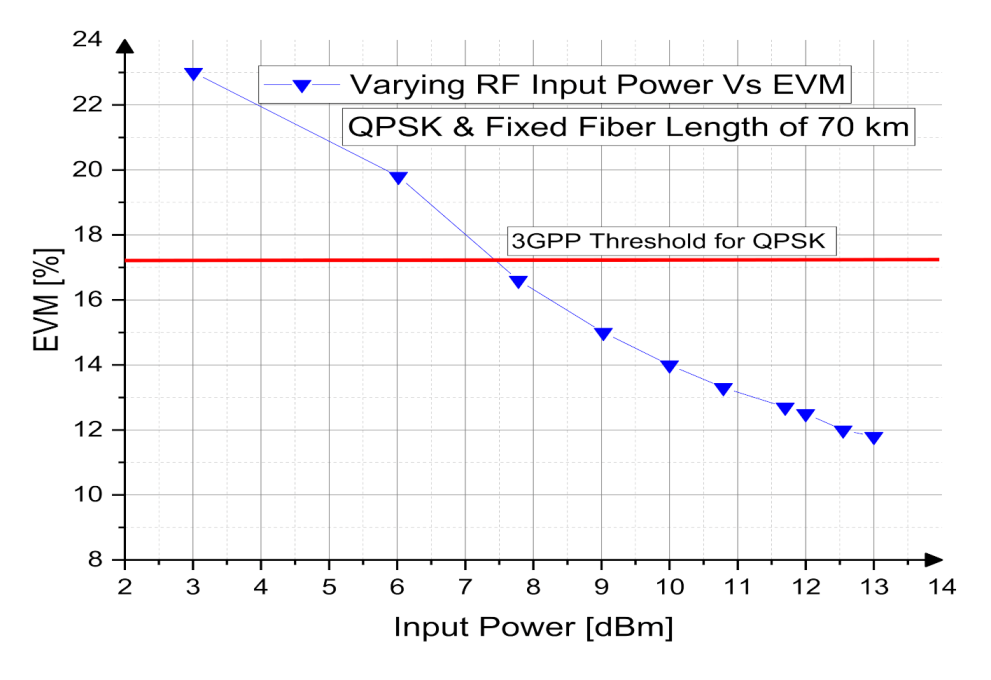
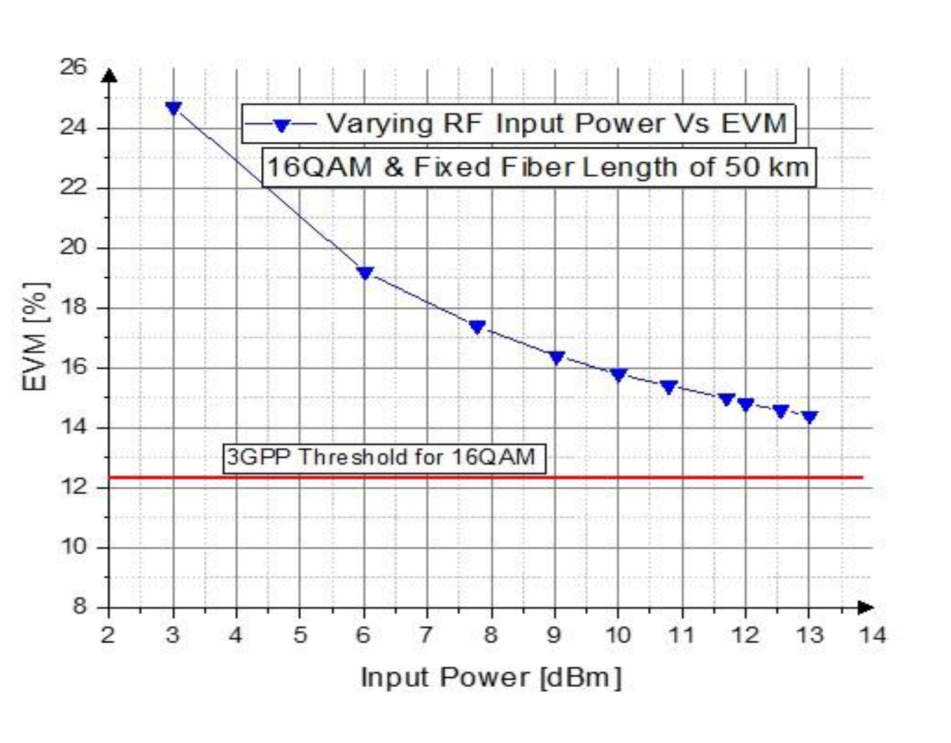
| Literature Review | Approach/Methods Discussed | Pros | Cons |
|---|---|---|---|
| [8] | Used parallel electro-optic modulation by using parallel electro-optic phase and intensity modulators | Suitable for long reach RoF links | Required costly hardware |
| [9] | Mode-locked lasers for mm-waves generation combined with MZM interferometer | Applicable to any RoF system for mm-wave generation | Required costly hardware |
| [10,12] | A dispersion compensation and dispersion shifted fiber is used | Easy to use | Old method and costly fiber |
| [11] | Use field programming gate arrays (FPGAs) to restore the transmitted signal | V band/W band OFDM RoF system | Required costly and more power hungry hardware |
| [13] | 25 GHz mm-wave over SSMF system using OFDM which uses a dual wavelength source | Dual wavelength modulation and single modulation techniques are used | Uses 25 GHz mm-wave frequency and RF amplifier |
| [14] | SFDR amplification strategy based on single side band (SSB) phase modulation | Simple structure to compensate dispersion and nonlinearity of modulator | Use erbium doped fiber amplifier and the system is not converged OFDM mm-wave |
| [16,19] | Use cascade least mean square (LMS) equalizer and variable step size equalizer | Use electronic dispersion compensation | BPSK is used and less transmission distance |
| [22] | Modified CMA is used | Simple algorithm | Considered multi path channel instead of SMF |
| [23] | Joint equalization by DD-LMS and MCMA algorithm | Better equalization | Complex algorithm and considered multi path channel instead of SMF |
| [24] | Used blind nonlinear compensator | Compensates fiber nonlinearity and long reach system | Use EDFA’s for long reach, expensive |
| [This Work] | Converged OFDM-based mm-wave A-RoF system at 60 GHz with offline signal processing | Electronic dispersion compensation in Matlab, no amplifiers used, cost effective system | Difficult to use higher order modulation formats in such system |
| Link Design Components | Values |
|---|---|
| Carrier Frequency | 7.5 GHz |
| Laser CW | 10 dBm |
| Wavelength | 1553 nm |
| RIN | −130 dB/Hz |
| SSMF Length | 0–100 km |
| Dispersion | 17 ps/nm/km |
| Dispersion Slope | 0.08 × 103 s/m3 |
| Photo Diode Model | PIN |
| Responsivity | 0.8 A/W |
| Thermal Noise | 10−12 A/Hz1/2 |
| Shot Noise | ON |
Publisher’s Note: MDPI stays neutral with regard to jurisdictional claims in published maps and institutional affiliations. |
© 2022 by the authors. Licensee MDPI, Basel, Switzerland. This article is an open access article distributed under the terms and conditions of the Creative Commons Attribution (CC BY) license (https://creativecommons.org/licenses/by/4.0/).
Share and Cite
Farooq, U.; Miliou, A. Assessment of Different Channel Equalization Algorithms for a Converged OFDM-Based 5G mm-wave A-RoF System at 60 GHz. Appl. Sci. 2022, 12, 1511. https://doi.org/10.3390/app12031511
Farooq U, Miliou A. Assessment of Different Channel Equalization Algorithms for a Converged OFDM-Based 5G mm-wave A-RoF System at 60 GHz. Applied Sciences. 2022; 12(3):1511. https://doi.org/10.3390/app12031511
Chicago/Turabian StyleFarooq, Umar, and Amalia Miliou. 2022. "Assessment of Different Channel Equalization Algorithms for a Converged OFDM-Based 5G mm-wave A-RoF System at 60 GHz" Applied Sciences 12, no. 3: 1511. https://doi.org/10.3390/app12031511
APA StyleFarooq, U., & Miliou, A. (2022). Assessment of Different Channel Equalization Algorithms for a Converged OFDM-Based 5G mm-wave A-RoF System at 60 GHz. Applied Sciences, 12(3), 1511. https://doi.org/10.3390/app12031511







